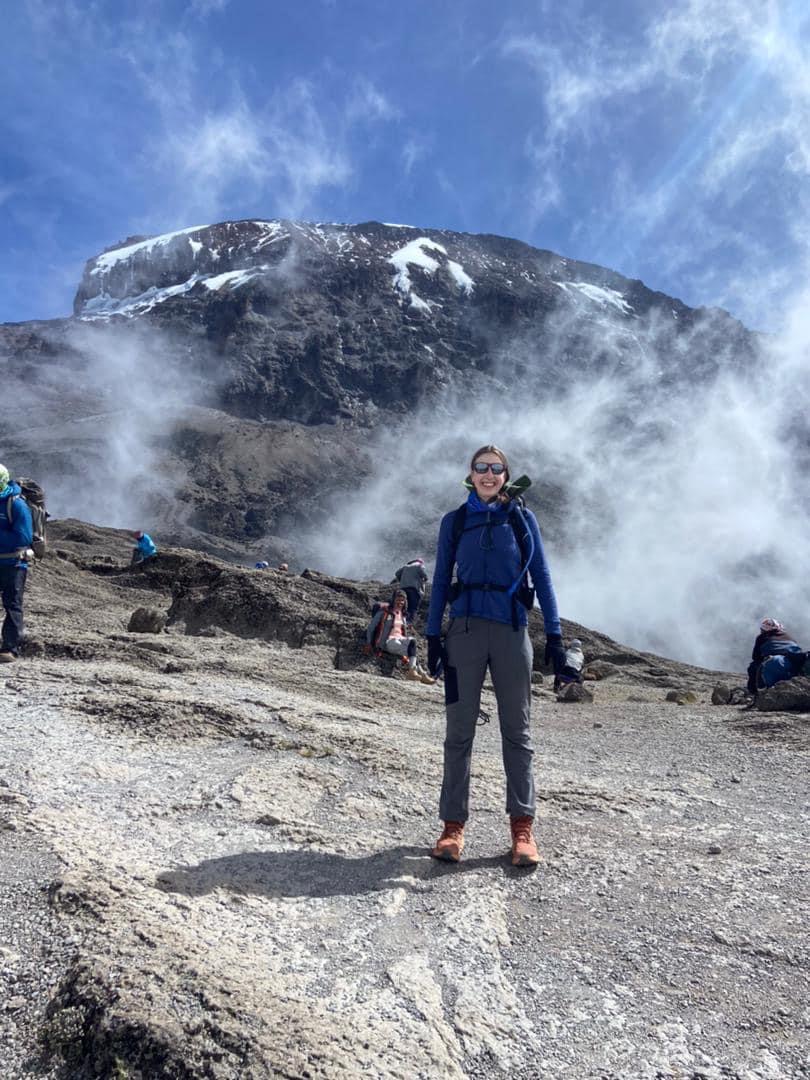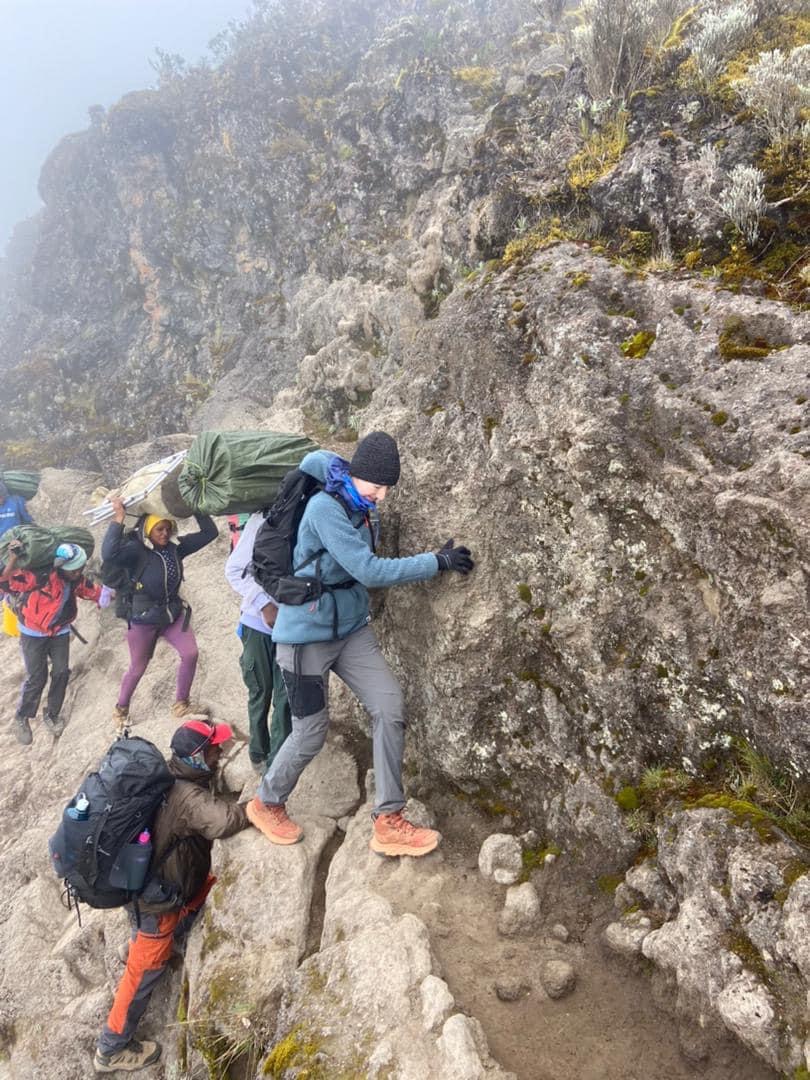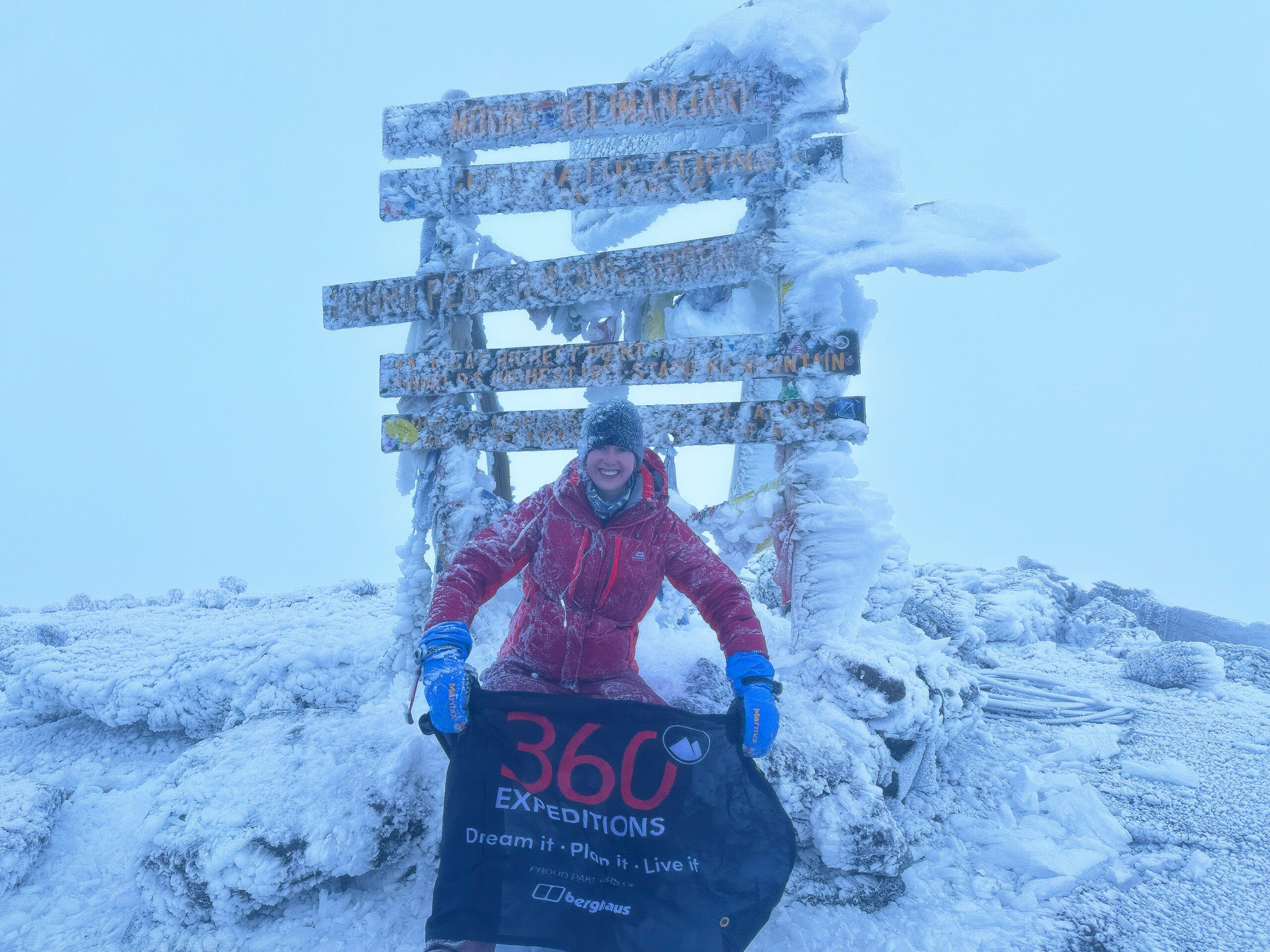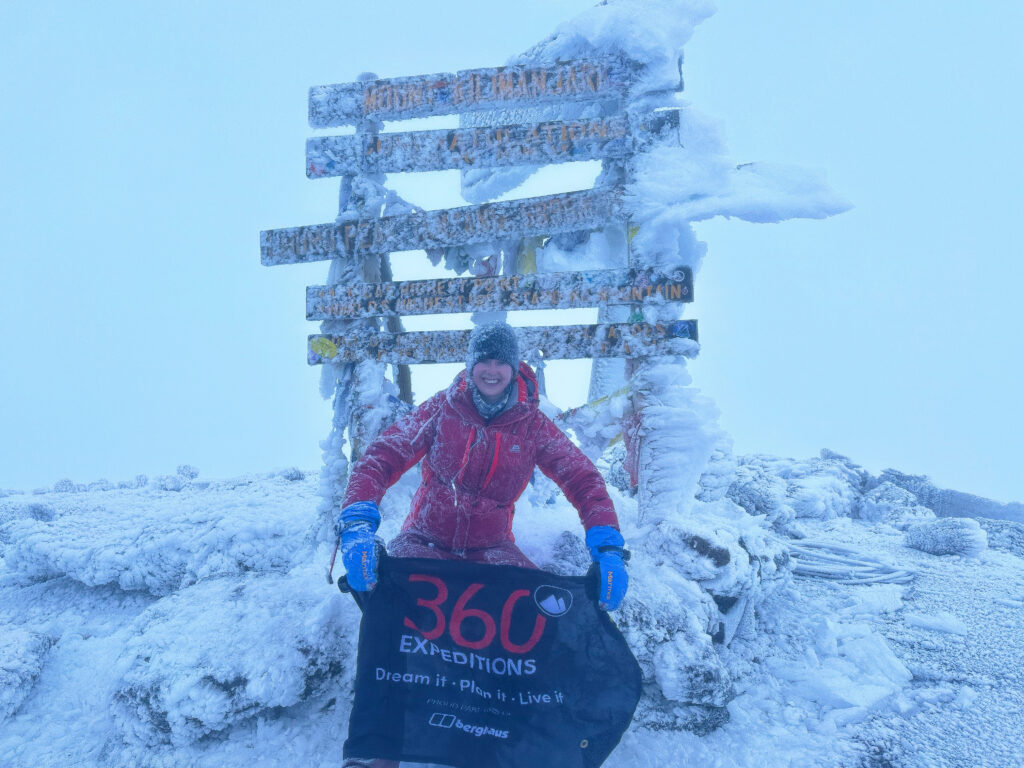Hiking Kilimanjaro has been a dream of mine for many years and on Sunday 25th February at 7:18am this became a reality. Despite 40mph wind and a temperature of -22 degrees I reached Uhuru Peak (5,895m / 19,340ft) meaning I had conquered one of the 7 summits of the world. This makes me the first person with Type 1 Diabetes and AVP-D to stand at the summit, but hopefully not the last!

I was diagnosed with Type 1 Diabetes on 14th March 2019. At the time I was studying Chemistry at St Andrews University whilst also playing international hockey. I had my sights set on Commonwealth and Olympic qualification, however due to the effects of such volume and intensity of training I decided that it was too challenging to try and manage my diabetes with elite-level sport. Mentally and physically, this sent shock waves through my life, and I massively struggled to envisage what life would now look like and how I could regain my independence, confidence, and happiness in life. This is why hiking came into my life.
It was 2020, in the middle of the COVID lockdown when I bought myself a campervan in order to tour the UK. I started planning trips around mountains that I could hike; Snowdon, Scafell Pike, Ben Nevis, Carrauntoohil and Slieve Donard. I also ventured further afield to France where I explored Pic du Midi, Mont Ventoux and Mont Pelat. Once I’d finished my campervan adventures, I felt ready to sign up for a bigger challenge and Kilimanjaro immediately became my goal! Having chronic illnesses can often mean you question your ability to take on challenges that others may not be as apprehensive about. However, I didn’t want fear to get in the way of me enjoying the experiences that life has to offer.
Having signed up for the expedition I wanted to plan as much as possible and be organised with my management of each condition. I knew there were factors I could control to keep myself safe from both a diabetic and AVP-D aspect. For example, my insulin would freeze at cooler temperatures and the batteries in my blood glucose meter would drain. Keeping this in mind I planned to keep my pens and meter next to my skin at all times, keeping them sufficiently warm. For my AVP-D I purchased sodium urine test strips which would give me a vague idea of my sodium levels.

There were aspects that I couldn’t prepare for and had to discover whilst on the trek. I found at higher altitudes that my insulin wasn’t working as effectively so increased my baseline for the duration of the trip. Monitoring my sodium levels was much harder and hyponatremia is a common side effect of my Desmopressin medication. I therefore made sure to have a breakthrough day just before I started the hike and also ensured I took electrolytes every day. When I started to experience symptoms of low sodium (cramps and weakness) I ensured that I skipped a dose and drank to thirst. Whilst diabetes meters are very common and help me to manage my diabetes well, a home sodium meter is currently not available, so this makes it challenging to stay safe. The Raymond A Wood Foundation are currently developing a meter which would be a huge benefit to the AVP-D community.
The challenge of Kilimanjaro is not to be underestimated, particularly following the route that we followed. The days were long and physical with lots of elevation gain and descent. Day 1 covered 4km where we departed Moshi for Londorosi Gate, signed in, weighed bags, and met our team of porters. We then continued to drive to Morum Picnic Site where we began hiking to Shira 1 Camp. Day 2 covered 10km as we trekked through the scenic heath landscape from Shira 1 to Shira 2 Camp. Day 3 was 11km heading southeast towards the Lava Tower – a 300 ft tall volcanic rock formation. This was great acclimatisation, getting us up to 3,600m. We then descended to Baranco Camp.Day 4 covered 6km where we scaled Baranco Wall before heading into the Karanga Valley and pitching our tents at Karanga Camp. Day 5 was 4km, leaving Karanga and going through the alpine desert to Barafu Camp (basecamp for summit night). Day 6 was summit attempt, leaving at 1:30am I reached the summit (Uhuru Peak) at 7:15am. After descending back to Barafu Camp and having a short break we then headed down to High Camp. This was a total of 14km. Day 7 involved descending 13.5km to Mweka Camp and then onto Mweka Gate through the rainforest. The trail was very rocky and steep making it strenuous on our knees.
The acclimatisation practice from day 3 onwards consisted of hiking to higher altitudes and then camping slightly lower to help our bodies adapt to the conditions. Whilst the hike wasn’t overly technical, the Baranco Wall section required scrambling over sheer rock faces and summit night involved trekking through thick ice and snow. I found that my glucose levels would vary considerably based upon what the pace and physicality was for that day. When walking gradually uphill my levels gently sloped downwards whereas the hard, steep push of summit night sent my levels high. It certainly kept me on my toes!

Whilst not everyone has a dream of hiking Kilimanjaro, I hope this shows that having chronic illnesses does not have to limit the extent to which you can push yourself mentally and physically. I learned so much about myself on this trip and it has genuinely been the best experience of my life. I’ve made new friends, learned about a totally different culture and way of life, witnessed unbelievable sights, pushed myself out of my comfort zone and achieved things that I never thought I could. Mental resilience is something you are forced to develop when living with a medical condition that affects your daily life and I think this made me well equipped to tackle the mental aspect of this challenge.
Having achieved my goal, I am asking for anyone who feels inspired by my challenge to donate to one of these amazing causes: Raymond A. Wood Foundation (AVP-D), JDRF UK (Type 1 Diabetes), The Pituitary Foundation (AVP-D).
Sincerely,
Amy Cairns

